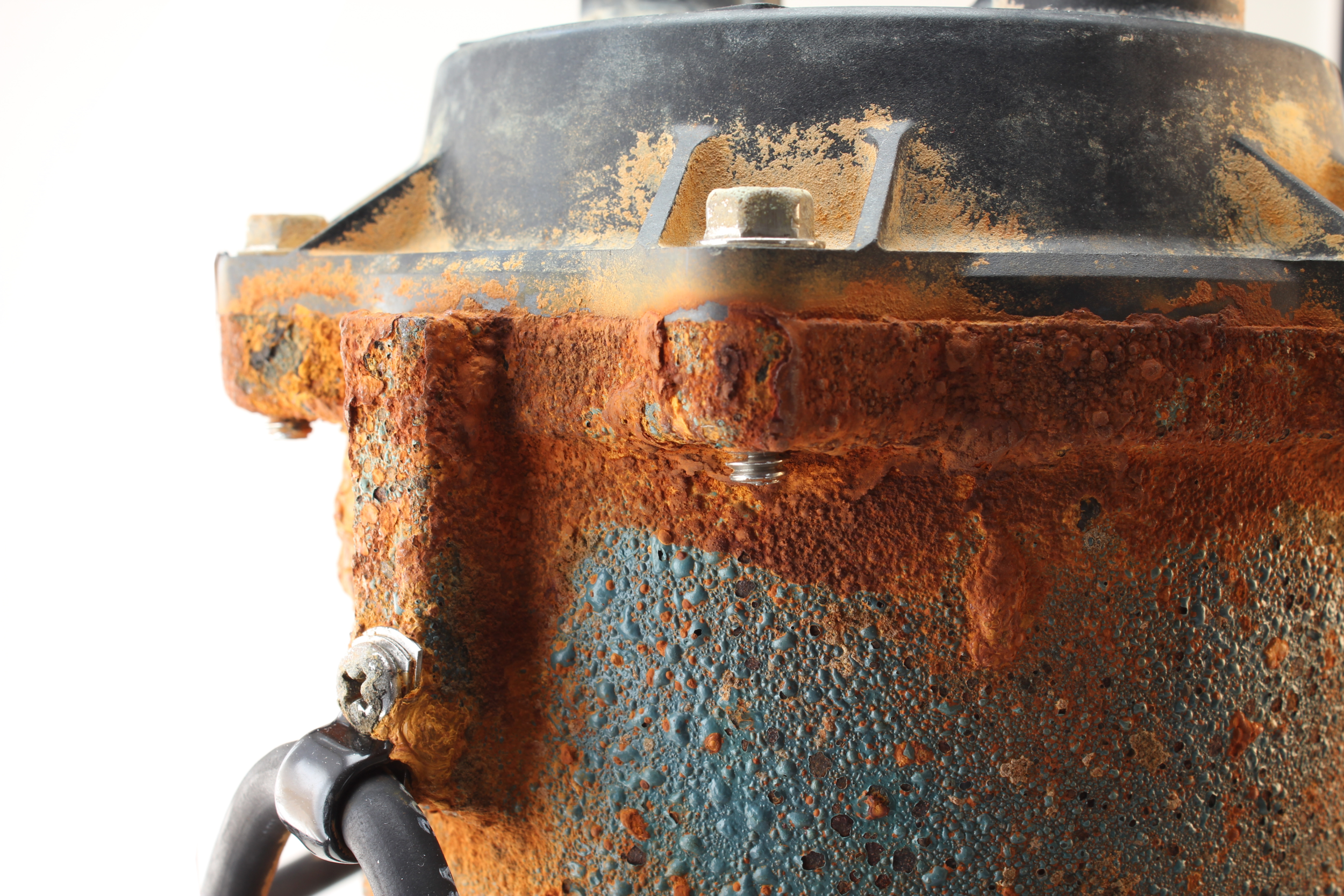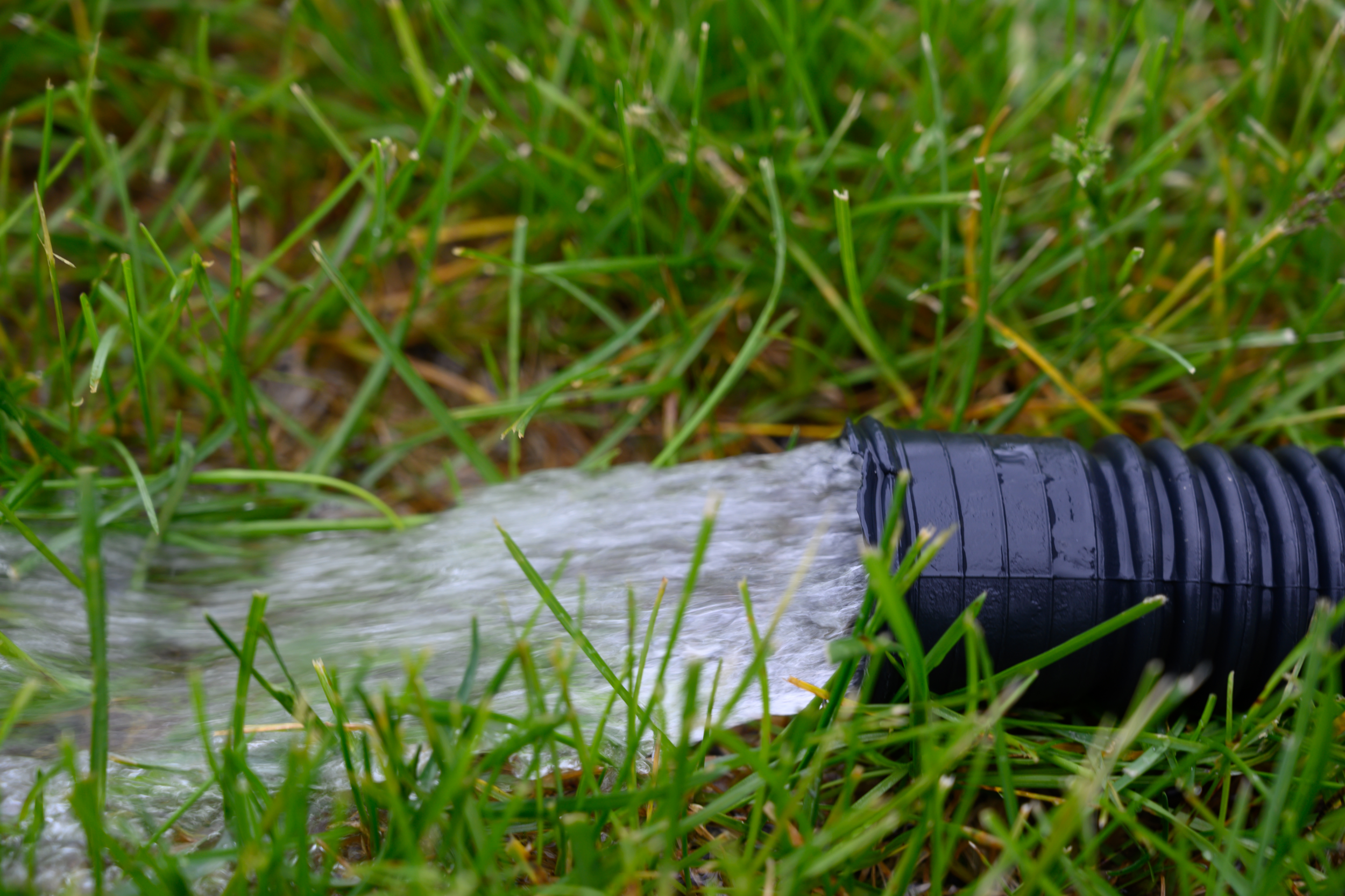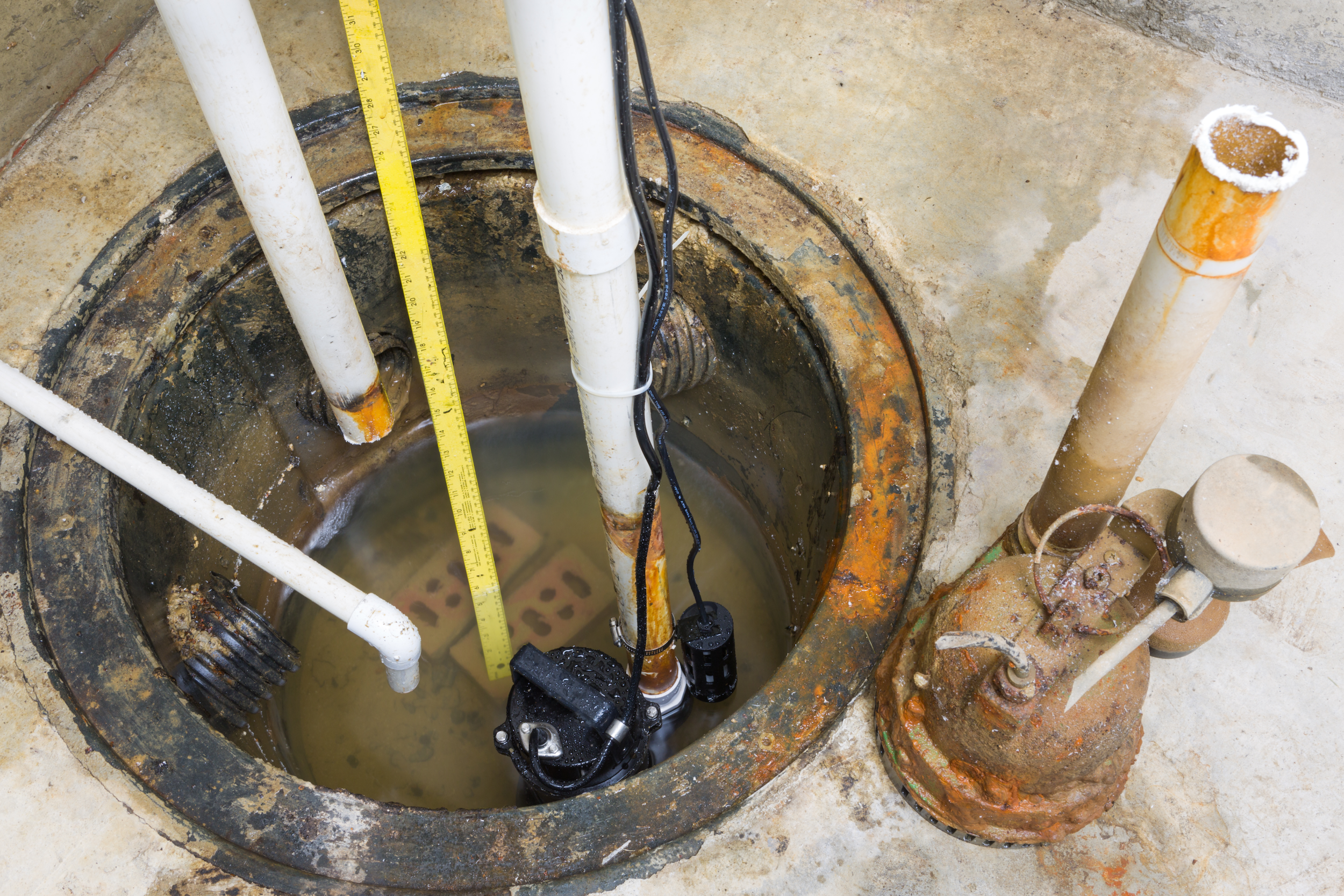Maybe It's Time To Repair Or Replace Your Sump Pump
Replacing an old Sump Pump
If you live in a house with a basement or crawlspace, you’re overly exposed to water seepage or seasonal flooding. Water seeping from the ground into the foundation of a building can cause structural damage, weaken support materials and create an environment where mildew, mold and fungus can grow and thrive.
Sump pumps solve the problem of moisture accumulation around a building's foundation, and drastically reduce the possibility of your home from flooding.
What Is a Sump Pump?
Sump pumps are mechanical devices that are installed on or below the surface of a basement, crawlspace or any place around a structure where water accumulates. They operate using electricity to remove rising groundwater, accumulated rainwater and other seepage, keeping the area dry.
The device consists of a motorized pump, a basin, a float mechanism and tubing that routes water out of the basement and into a suitable discharge area. The entire apparatus should be covered.
A pit, or sump, is dug into the basement floor where water accumulates, ideally at the lowest spot.
The sump has inlets that route water to the pit. Depending on the type of pump you choose, the pump is installed in or adjacent to the pit. A float or leveling device senses rising water.
When the water in the sump reaches a predetermined level, the pump turns on and suctions out the water.
The water is routed to an appropriate discharge area and released.
Sump Pump Drainage
“Depending on the problem, repairs can range from under $100 to over $1,000. Where you live, the type of pump, extent of damage and cost of professional services affect the price.”
Types of Sump Pumps
There are two main types of sump pumps: pedestal and submersible.
In addition, there are two main types of backup pumps: battery-powered and water-powered. The cost of a sump pump varies according to the type of pump and the quality of the equipment.
Pedestal Systems
Pedestal units have an exposed motor that sits above the basin. A submerged float activates the motor when the water level rises. A hose extends into the sump pit to suction out the water. Pedestal systems are easy to install and last up to 30 years when properly installed and maintained. Several pedestal pump manufacturers also offer battery back-up options for a sump pump.
Submersible Sump Pump
Submersible Systems
A submersible drainage sump pump is installed inside the basin. The motor is encased, protecting it from water and debris. Submersible units are quieter to operate and often remove more water. However, they cost more, are more difficult to repair, maintain, and do not last as long.
“The cost of a new pump may range from approximately $80 to more than $400 depending on the model. Better systems cost more but should give improved performance and last longer. ”
Backup Systems
Battery Sump Pump
A battery backup for a sump pump allows continued operation when power is interrupted. The battery supplies the energy for the pump to operate when electrical power is disrupted.
They are easy to install and operate. However, a battery has limited runtime. If the power is out for an extended period, the battery backup for a sump pump will stop working if not recharged.
Water Powered Sump Pump
A water powered or hydro electric backup sump pump operates when the power source is interrupted or the main pump fails. If water rises past the main pump's float, the water-powered pump's float causes a valve to open on the pump ejector, which is connected to the piping of your home's incoming water supply.
Water running through this pipe suctions water up from the sump pit, which is routed through the piping and discharged outside.
Importance of Installing a Sump Pump
Sump pumps are a homeowner's answer to dealing with water around the foundation of a home. Some regions have high water tables with water seepage throughout the year. Some areas are subject to seasonal rains and runoff that cause occasional flooding or water accumulation.
Some homes are oriented so that surface runoff accumulates at the foundation. Whatever your situation, a drainage sump pump will remove water and keep your home dry.
A wet or flooded basement or consistently wet crawlspace can cause severe problems. Standing water can weaken the foundation, erode concrete and damage support beams. In addition, mold and other biological agents can develop and cause health problems, create foul odors, create an environment for pest infestation or degrade building materials.
A sump pump offers assurance that the basement, crawlspace or other areas where water accumulates will stay dry.
Maintaining Your Sump Pump
Just like any other type of equipment, routine maintenance ensures that your sump pump operates properly. If you live in a wet area, check the pump several times a year, particularly during rainy seasons or other times when groundwater levels rise. If it is not working and you do not know it, your basement may flood.
There are four basic tasks a homeowner can do:
• Test the pump to make sure it is working. Pour enough water into the basin to activate the pump. Watch to make sure that all the water is evacuated and that the unit shuts off.
• Check for debris, and clean the basin regularly. Even if the pump is working, debris can affect the efficiency of operation.
• Check to make sure that the circuit breaker or ground-fault circuit interrupter has not tripped. If your pump has a GFCI, test it regularly to make sure it is working. If the GFCI trips, the pump will not work.
• Check that the float is not tangled or jammed, which will affect its ability to sense rising water.
Signs That You Need To Repair a Sump Pump
Even if a sump pump runs, it may require maintenance or repair. A sluggish motor will not be able to remove much water.
Investigate any change in the sound of the motor to make sure it is working properly. If the sump is dirty, debris may have infiltrated the impeller in the basin. A professional may be required to disconnect, clean and reconnect the screen, piping and impeller.
If your sump pump is not working at all, go through the maintenance checklist outlined above to troubleshoot simple problems. If the electrical connections are intact and other elements are fine, a professional can evaluate whether repairing a sump pump is cost-effective or whether you should replace it.
Because submersible pumps are connected to electricity and installed below the waterline, there is a danger of electrical shock from a malfunctioning unit. A professional is trained to safely handle equipment in these situations.
Sump Pump Replacement
Costs To Repair a Sump Pump
Several factors affect how much sump pump repairs cost. One or more components of the system, including the pit lining, motor, float, electrical connections, alarm, piping or drainage system, could have a fault.
Depending on the problem, repairs can range from under $100 to over $1,000. Where you live, the type of pump, extent of damage and cost of professional services affect the price
Nationwide, the median cost for sump pump repair is approximately $450. Submersible pumps cost more to repair than pedestal units
If your battery-backup pump requires a new battery, expect to pay approximately $100
Cost To Replace a Sump Pump
If your pump is more than seven years old, has rust, will not turn off or on properly or makes weird noises, it may be time to replace it. If you are replacing a sump pump, costs will be lower than installing one for the first time because the sump basin, lining, plumbing and electrical connections are already in place.
$80 to more than $400 depending on the model
Better systems cost more but should give improved performance and last longer
Cast-iron, stainless steel and cast-aluminum components will last longer than plastic
If you live in an area that is at low risk for flooding, a cheaper model may be sufficient.
If you are adding a backup pump, check to make sure that the sump is large enough to house both units. Alternatively, some models include a battery back-up for a sump pump in the same unit. Your decision about whether to add a backup system should take into account how often the pump is used and the amount of water to be removed.
Pedestal Units Are The Least Expensive
Pedestal units have less powerful motors, generally 1/3 to 1/2 horsepower, and remove about 35 gallons of water per minute. Submersible pumps cost more. Their more powerful ¾-horsepower motors remove up to 60 gallons per minute. Battery-backup units cost more, averaging $400. Better models can cost well over $1,000. Water-powered systems cost between $200 and $400. The benefit of the water-powered backup system is that is does not require a battery or electricity to perform.
Professional installation can double the cost of equipment.
Labor charges generally range from $45 to $80 per hour. If replacing the pump takes five hours, charges may run from $225 to $400. Be sure to include these figures when estimating the cost of a sump pump replacement. Although hiring a professional may cost more, licensed, experienced plumbers and waterproofing contractors usually guarantee their work and can deal with any problems that come up during the installation.
Discharge Areas
A discharge area may be a sewer, dry well, natural drainage field or other approved area.
Routing the pumped water directly into your yard defeats the purpose of the system because the water will percolate into the soil and infiltrate your home. Water should be discharged at least 20 feet from the building.
Many municipalities now prohibit sump pumps from discharging into a sewer. If you are replacing a sump pump that is connected to a municipal sewer, it is important to verify that it can continue to be routed to the same discharge system.
If you are installing one for the first time, check local codes to find out what types of discharge areas are allowed in your community.
Although installing a sump pump may sound expensive, dealing with a flooded basement or home will cost much more. A well-maintained sump pump will take the worry out of keeping your home dry and safe from flooding.




